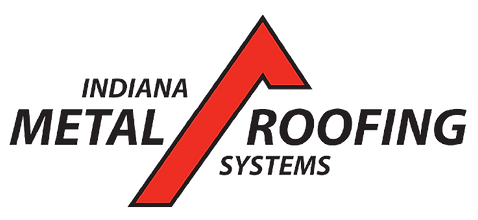Step-by-Step Guide to Installing Metal Roofing
- Joseph Justice
- Mar 3
- 3 min read
Metal roofing is a durable and energy-efficient option for homeowners looking to upgrade their roofs. With proper installation, metal roofs can last over 50 years, providing superior protection against the elements. Indiana Metal Roofing Systems offers expert installation services, ensuring long-lasting performance and aesthetic appeal for homes in Fort Wayne, IN. Here’s a comprehensive guide to installing metal roofing.

1. Preparation for Installation
Tools and Materials Needed
To install a metal roof, you’ll need the following tools and materials:
Tools: Safety gloves, ladder, drill, tape measure, utility knife, chalk line, tin snips, roofing hammer, and safety harness.
Materials: Metal panels, underlayment, starter strips, screws, nails, flashing, sealant, and trim.
Safety Considerations
Safety is paramount during roof installation. Always use personal fall protection, including a harness and safety ropes, and avoid working in wet or windy conditions.
Measuring and Ordering Materials
Accurate measurements are critical. Measure the roof’s dimensions (length, width, and slope) to order the correct amount of metal panels and underlayment. Having extra material on hand can help account for any miscalculations.
2. Preparing the Roof Deck
Before installing the metal panels, it’s important to prepare the roof deck properly.
Inspect and Repair the Deck: Check for any damage or rotting wood and replace sections as necessary.
Install Underlayment: Underlayment acts as a moisture barrier. Roll out the underlayment horizontally, starting from the bottom edge of the roof. Overlap each row by 4 inches to prevent water from seeping in.
3. Installing the Metal Panels
Laying Down Starter Strips
Starter strips help align the first row of metal panels. Install them at the edge of the roof, ensuring they’re straight and secure using roofing screws or nails.
Positioning and Securing the Panels
Begin at the Bottom: Start installing the first metal panel at the bottom left corner of the roof. Ensure that the panel is square with the edge of the roof.
Fastening: Use screws with rubber gaskets to ensure a watertight seal. Place screws in the raised ribs of the panels and follow the manufacturer’s recommended spacing, usually 12 to 24 inches apart.
Overlapping Panels
Each metal panel should overlap with the previous one by a few inches. This overlap ensures that water runs off properly without seeping between the panels.
4. Installing Flashing and Trim
Flashing and trim are essential for sealing the edges and roof penetrations, such as around chimneys or skylights. Install flashing at roof valleys and around vents to prevent water infiltration. Add trim along the roof's edges to give it a finished look and provide additional weather protection.
5. Sealing and Waterproofing
To complete the installation, apply a high-quality sealant along seams and overlaps to ensure your roof is watertight. Pay extra attention to roof transitions and penetrations where leaks are more likely to occur.
6. Final Inspection and Cleanup
Once all the panels are in place, conduct a thorough inspection. Ensure that all screws are tight, there are no visible gaps between panels, and flashing is properly installed. Clean up any debris and ensure the roof is free from tools or materials that could cause damage.
FAQs
Can I install a metal roof myself?While it’s possible, metal roof installation is complex and requires experience. It’s best to hire a professional to avoid mistakes that could lead to leaks or damage.
How long does a metal roof last?Metal roofs can last 40-70 years, depending on the material and quality of installation.
Do I need underlayment for a metal roof?Yes, underlayment acts as a moisture barrier, protecting the roof deck from water infiltration.
What are the benefits of metal roofing?Metal roofs offer superior durability, energy efficiency, and fire resistance compared to other materials.
How much does metal roof installation cost?The cost varies depending on the size of the roof and materials used but typically ranges between $8,000 and $20,000.
Conclusion
Installing a metal roof requires precision and expertise. Following these steps will help ensure a durable, long-lasting roof. However, metal roof installation is a complex task that should be handled by professionals to avoid mistakes. Indiana Metal Roofing Systems offers professional roofing services, ensuring high-quality installation for your home.
Read more about: DIY Roofing Dangers: Why It’s Best to Hire Professionals


Comments